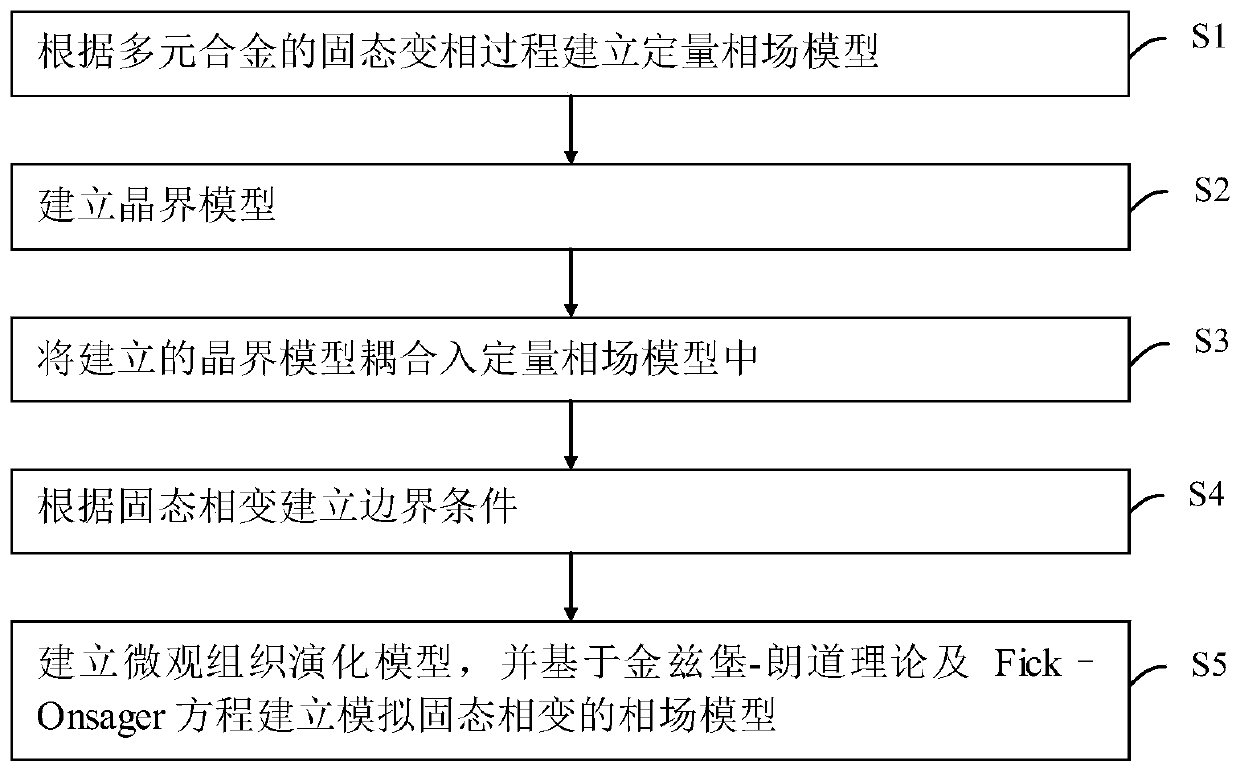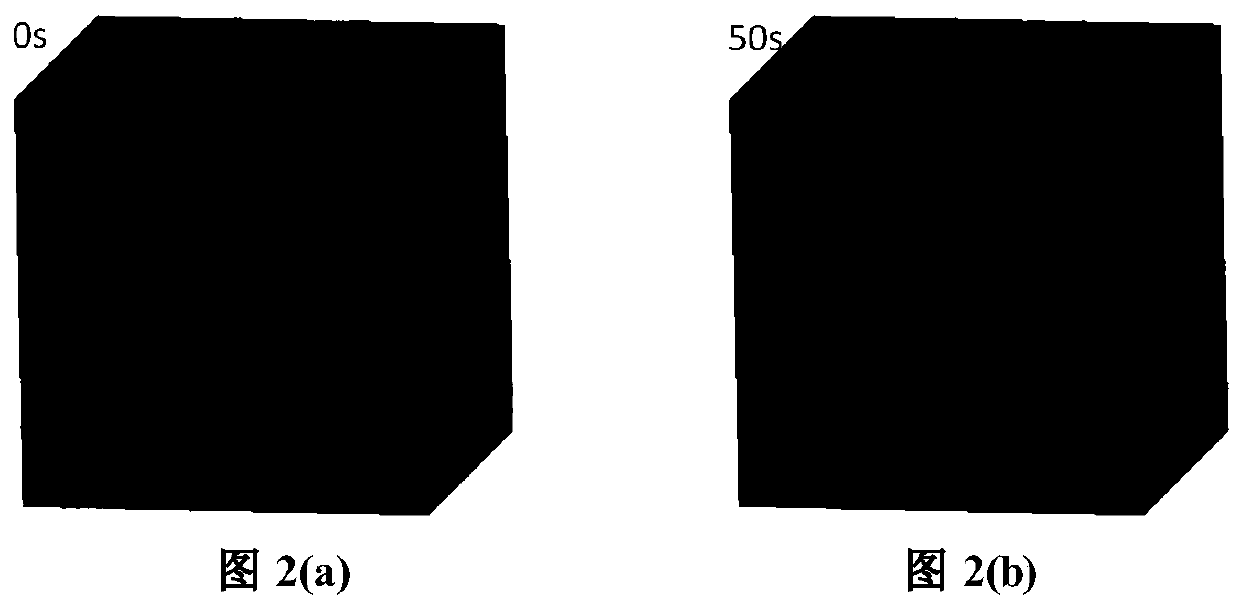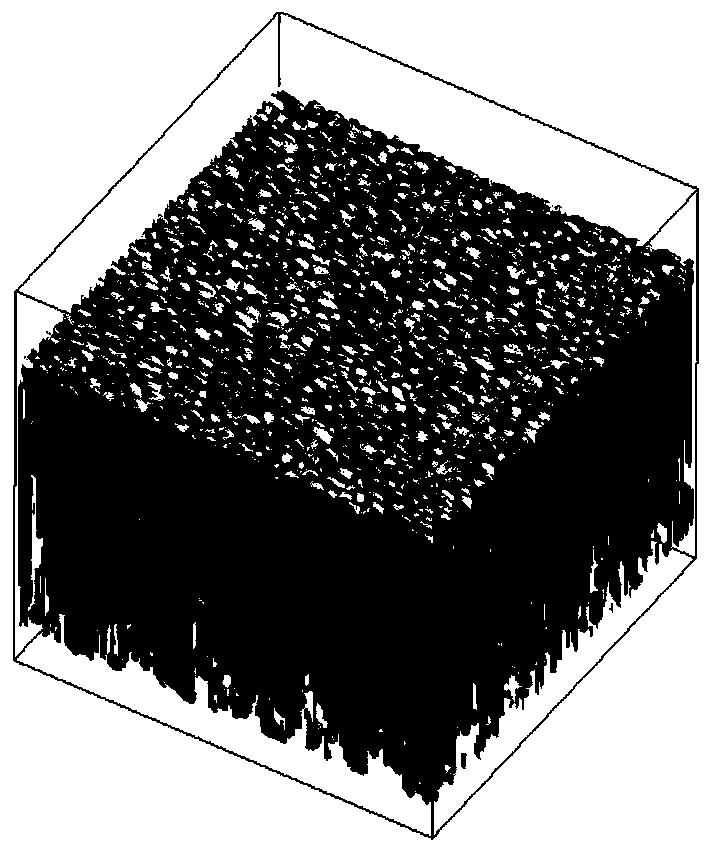A multi-element alloy solid phase change simulation method based on a coupled grain boundary diffusion phase field method
A simulation method and multi-element alloy technology, applied in special data processing applications, instruments, electrical digital data processing, etc., can solve problems such as ignoring grain boundary diffusion, and achieve the effect of optimizing the heat treatment process
- Summary
- Abstract
- Description
- Claims
- Application Information
AI Technical Summary
Problems solved by technology
Method used
Image
Examples
example 1
[0089] The multi-component alloy is Ti-6Al-4V alloy, and the phase transformation process from solid phase α to solid phase β is as follows:
[0090] In the process of establishing the quantitative phase field model, the microstructure of Ti-6Al-4V alloy in solid solution state is biequal axis microstructure, so in the free energy G of the system such as formula (1), the energy gradient coefficient Local molar free energy G m is the molar free energy of the solid phase α Molar free energy of solid phase β and the sum of the energy barrier W(η) of the two solid phase free energies of α and β, f(η) is the volume fraction of the solid phase α, and Molar free energy of solid phase α and the molar free energy of the solid phase β Data were obtained from the alloy database with the help of Thermo-Calc software.
[0091] In the KKS model such as formula (2) and formula (3), The kinetic coefficient M of the elements in the grain pi is the linear superposition of kineti...
example 2
[0103] The multi-component alloy is Ti-6Al-4V alloy, and the phase transformation process from solid phase α to solid phase β is as follows:
[0104] In the process of establishing the quantitative phase field model, in order to study the microstructure evolution process of the α sheet in the Ti-6Al-4V alloy, in the free energy G of the system such as formula (1), the energy gradient coefficient Local molar free energy G m is the molar free energy of the solid phase α Molar free energy of solid phase β and the sum of the energy barrier W(η) of the two solid phase free energies of α and β, f(η) is the volume fraction of the solid phase α, and Molar free energy of solid phase α and the molar free energy of the solid phase β Data were obtained from the alloy database with the help of Thermo-Calc software.
[0105] In the KKS model such as formula (2) and formula (3), The kinetic coefficient M of the elements in the grain pi is the linear superposition of kinetic c...
PUM
 Login to View More
Login to View More Abstract
Description
Claims
Application Information
 Login to View More
Login to View More - R&D
- Intellectual Property
- Life Sciences
- Materials
- Tech Scout
- Unparalleled Data Quality
- Higher Quality Content
- 60% Fewer Hallucinations
Browse by: Latest US Patents, China's latest patents, Technical Efficacy Thesaurus, Application Domain, Technology Topic, Popular Technical Reports.
© 2025 PatSnap. All rights reserved.Legal|Privacy policy|Modern Slavery Act Transparency Statement|Sitemap|About US| Contact US: help@patsnap.com



